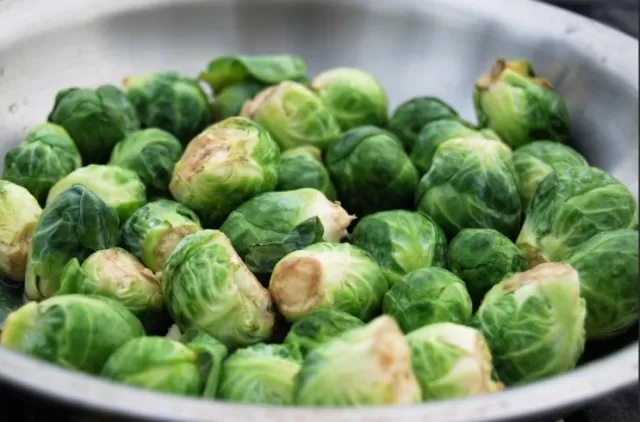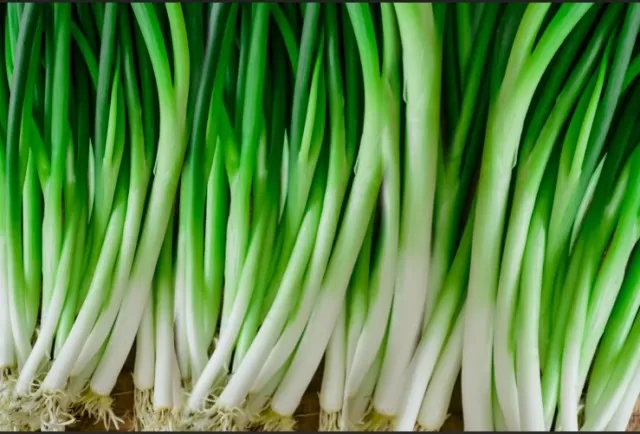13 Shade-Loving Vegetables That Flourish (Part 2). Lack of direct sunlight in your yard shouldn’t deter you from growing vegetables. Many leafy greens such as spinach, lettuce, and kale, along with root crops like beets and carrots, thrive in low-light conditions. Shade-tolerant vegetables not only serve a practical purpose but also enhance the visual appeal of your garden with their lush foliage and varied textures. Moreover, they extend the vegetable growing season, allowing you to enjoy fresh produce well into early spring or late fall as sunlight diminishes. Here, organic gardener Vallin Kostovick, home garden expert Jack Lind, and edible gardening guru Niki Jabbour share their expertise on how to make it happen, even in the absence of abundant sunshine.
Enhancing the Flavor of Brussels Sprouts through Temperature Control

Brussels sprouts, packed with essential vitamins C and K, undergo a flavor transformation in cooler temperatures.
For optimal growth, consider planting them either in early spring or during the mid-to-late summer months. These hardy greens thrive in well-drained soil that boasts an abundance of organic matter.
To get started, sow the seeds in pots at a depth of 1/4 to 1/2 inch.
After six to eight weeks, when the seedlings are robust enough, transplant them into your garden. Maintain a spacing of 24 to 36 inches between each seedling to allow them ample room to flourish and yield a bountiful harvest.
Maximizing Kale Flavor and Growth through Smart Planting and Harvesting
Kale, renowned for its vitamin-rich profile, can turn bitter when exposed to scorching temperatures.
To ensure a tastier yield, consider providing them with some shade. For successful kale cultivation, adhere to these guidelines:.
Strategic Planting: Timing is crucial.
Plant kale about one month before the final frost in spring and/or six weeks ahead of the first frost in the fall. This timing allows for the ideal growth conditions.
Soil Preparation: Kale thrives in compost-rich, well-draining soil.
Prior to planting, ensure your soil is amply enriched with organic matter.
Proper Seed Placement: Sow kale seeds at a depth of 1/4 inch and maintain a spacing of 3 inches between them.
This spacing facilitates healthy growth.
Mulching for Moisture: In warmer climates, apply mulch around your kale plants to conserve moisture and keep the soil cool.
This helps combat the adverse effects of heat.
Harvesting Technique: You can harvest kale at both the baby and full-size stages.
To do so, start by removing the outer leaves, starting from the bottom. However, exercise caution not to remove more than one-third of the plant at any given time, as this can impede further growth.
By following these steps, you can ensure your kale crop thrives, delivering not only a richer taste but also a bountiful harvest.
Cultivating Nutrient-Rich Scallions with Expert Care

Scallions, prized for their iron content, thrive in shaded environments, which helps prevent the unwanted phenomenon of bolting.
To ensure a successful harvest, consider planting them during either the early spring or late summer, targeting a bountiful fall yield. Scallions have a strong preference for soil that is not only enriched with compost but also loose and well-drained.
Whether you opt for containers or traditional garden beds, the key is to sow the seeds at a depth of 1/4-inch, and ensure a generous spacing of 12 to 18 inches between each plant. This thoughtful approach to scallion cultivation will result in a flourishing crop of these delicious and nutritious green onions.
Elevate Your Garden with Lush Bok Choy
Bok choy, a rapid grower teeming with folate, thrives in the cool embrace of shade, promising a more nuanced and tender flavor in its leaves.
To embark on a successful bok choy journey, choose to plant this vegetable during the spring or late summer. Optimal growth conditions for bok choy include a well-drained, consistently moist soil, making it a versatile addition to both deep containers and traditional garden beds. Sow the seeds with care, spacing them 2 inches apart and lightly covering them with soil. Given its hearty appetite for nutrients, bok choy graciously accepts the nourishing presence of compost.
One of the marvels of bok choy cultivation is its speedy development.
Leaves can be plucked individually throughout the growing season, offering a continuous harvest of fresh greens. For those with a little less patience, heads can be ready for harvesting in as few as 35 days, making bok choy a delightful and rewarding addition to any garden.
Elevate Your Garden with Nutrient-Packed Peas

Peas, the champions of speedy growth and vitamin-rich goodness, flourish best in cooler climes and dappled shade.
To ensure a bountiful harvest, consider planting these delightful legumes during the early spring or the crisp days of autumn. Opt for a soil rich in compost, renowned for its ability to provide peas with the nutrients they crave while ensuring excellent drainage.
Whether you choose to nurture them in a deep container or the fertile grounds of your Garden Bed, sow the pea seeds with precision at a depth of 1 inch and maintain a generous spacing of 2 inches between each seed.
Support is the key to success for climbing pea varieties.
Equip them with a trellis or some form of sturdy guidance to reach their full potential. With their rapid growth and abundant yield, peas are a valuable addition to any garden, offering not only their fresh, crisp pods but also a healthy dose of vitamins C and E.
Elevate your gardening experience with these versatile and nutritious legumes.
*The information is for reference only.